Occupational Safety Training in Iron Ore Mining
99,000 ₫
Note: The above price is calculated for one person and may fluctuate depending on the number of trainees participating in the course and market movements. For more accurate pricing support, please refer to the quotation table or contact our consulting staff directly.
Occupational safety is a critical issue in iron ore mining and must be addressed promptly to ensure the health and safety of workers and enhance the reputation of businesses. The Occupational Safety Training course is an effective solution to raise awareness among workers on accident prevention when participating in iron ore mining.
Table of Contents
Toggle1. Overview of iron ore
a. What is iron ore?
- Iron ore is a type of mineral containing iron, used to manufacture steel products. Iron ore is found in many places around the world and comes in various forms, but the most common are magnetite (Fe3O4), hematite (Fe2O3), limonite, and siderite. Iron ore is extracted through a mining process and then processed to separate the iron from rock, soil, and other minerals.
- Vietnam is a country with potential in the iron ore mining industry. However, Vietnam’s iron ore mining industry has not yet developed as fully and efficiently as other countries in the world. Currently, the amount of iron ore mined in Vietnam only reaches about 30 million tons/year, much lower than countries with developed iron ore mining industries like China, Australia, or Brazil.
- However, in recent years, Vietnam has made significant progress in improving iron ore mining productivity. Large projects have been implemented, meeting the demand for iron ore in the domestic market as well as for export. Notably, Vietnamese businesses have begun to invest in iron ore mining projects in other countries such as Laos, Cambodia, and Myanmar.

b. Types of machinery involved in iron ore mining
The types of machinery for iron ore mining include:
- Crushers: Crushers are used to crush ore pieces into smaller pieces, making transportation and the use of other mining technologies easier.
- Screening machines: Screening machines are used to separate the crushed ore pieces into different sizes.
- Filtration equipment: Filtration equipment is used to remove impurities from iron ore.
- Separation equipment: Separation equipment is used to separate iron ore from other impurities, helping to increase production efficiency.
- Drills: Drills are used to bore holes in the ground or in the mine to extract iron ore.
- Excavators: Excavators are used to dig up iron ore from deep layers underground.
- Haulers: Haulers are used to transport rock blocks and iron ore from the mine to the processing factory.
- Grinding mills: Grinding mills are used to grind rock blocks and iron ore into powder.
- Analysis equipment: Analysis equipment is used to check the quality and iron content of the ore.

c. Typical iron ore mining companies in Vietnam
Typical iron ore mining companies in Vietnam include:
- Hoa Phat Group: This is the largest steel group in Vietnam, operating in many fields such as steel manufacturing, iron ore mining, door manufacturing, construction steel, furniture, building materials, etc. In Vietnam, Hoa Phat owns and manages iron ore mining projects in Thanh Hoa, Yen Bai, Tuyen Quang, Lao Cai and Quang Ninh provinces.
- Vietnam National Coal and Mineral Industries Group (Vinacomin): This is the largest coal and mineral production group in Vietnam, playing an important role in the iron ore mining industry in Vietnam. Vinacomin manages iron ore mining projects in Lao Cai, Ha Tinh, Nghe An, Thanh Hoa, Quang Ninh, etc.
- Vietnam Trung Mineral and Metallurgy Joint Stock Company (VTM): The company was established in 2009, operating mainly in the field of iron ore mining and metallurgy. Currently, VTM owns an iron ore mine in Thanh Hoa, with a production capacity of about 2 million tons of iron ore per year.
- T&T Group: This group operates in many fields such as finance, real estate, energy, etc. However, T&T Group also has an iron ore mining project in Yen Bai province.
- Hoang Gia International Company Limited: This company mainly operates in the field of iron ore mining, with mining projects in Tuyen Quang, Lao Cai, and Thanh Hoa provinces.
d. Specific jobs in an iron ore mining factory
Group 1
- Executive director, deputy executive director of an iron ore mine
Group 2
- Safety officer: managing safety in the factory, designing safety procedures, supervising and urging employees to comply with safe work procedures.
Group 3
- Iron ore mining: Includes activities such as drilling, blasting, digging, and transporting iron ore from the mine to the factory.
- Crushing and screening: Iron ore is transported to the factory and is crushed and screened to separate the valuable ore from the worthless parts.
- Metallurgy: After being separated, the iron ore is put into the metallurgical process to be converted into steel or other steel products.
- Waste treatment: Waste and by-products of the mining and metallurgical process need to be treated safely and in accordance with procedures to avoid affecting the environment and the health of employees.
- Maintenance and repair: The iron ore mining factory needs to be maintained and repaired regularly to ensure continuous and efficient operation.
- Management and supervision: Activities in the iron ore mining factory need to be managed and supervised strictly to ensure safety and efficiency.
Group 4
- Office jobs, service, sales, marketing.
- Production management, quality management, human resource management, material management, financial accounting management.

2. Overview of iron ore mining occupational safety training course
Within the scope of this article, we focus on issues related to Group 3, because Group 3 is the group that directly participates in the manufacturing process, bearing the highest risk of occupational safety. Refer to other groups here
a. What is Group 3 occupational safety training?
- Occupational safety training for Group 3 are sessions that equip employees with awareness of how to prevent workplace accidents.
- The occupational safety training course will help employees identify and avoid dangers, limiting the risks of workplace accidents during work.
REGISTER FOR OCCUPATIONAL SAFETY TRAINING SERVICE
b. Training time
Initial safety training time
- Total training time is at least 24 hours, including inspection time.
- 8 hours of theoretical study on the system of policies and laws on occupational safety and health
- 8 hours of theoretical study on basic knowledge of occupational safety and health
- 4 hours of theoretical study on specialized training content
- 2 hours of practical study on specialized training content
- 2 hours of theoretical examination at the end of the training course
The safety training center will allocate the time into multiple training sessions depending on the arrangement of study time for employees. However, there will usually be 6 training sessions, the course will take place over 3 days, provided that the manufacturing company can arrange continuous study time.
Periodic safety training time
- Before the occupational safety card expires, if an employee wants to get a new one, they must undergo a periodic occupational safety training course, with the periodic safety training time being at least 50% of the initial safety training time.
Explanation: the total periodic occupational safety training time is at least 12 hours, including inspection time. After completing the periodic training course and passing the required test, the employee will be re-issued or have their occupational safety card extended.
c. Contents of the training course
| STT | TRAINING CONTENT | TRAINING TIME (HOURS) | |||
| Total | Of which | ||||
| Theory | Practice | Test | |||
| I | System of policies and laws on occupational safety and health | 8 | 8 | 0 | 0 |
| 1 | Overview of the system of legal normative documents on occupational safety and health. | 6 | 6 | ||
| 2 | System of occupational safety and health technical standards and regulations. | 1 | 1 | ||
| 3 | Specific regulations of state management agencies on occupational safety and health when newly building, expanding or renovating facilities to manufacture, use, store and inspect machinery, equipment, materials, and substances with strict requirements for occupational safety and health. | 1 | 1 | ||
| II | Basic knowledge of occupational safety and health | 8 | 8 | 0 | 0 |
| 1 | Basic knowledge of hazardous and harmful factors in the workplace. | 4 | 4 | ||
| 2 | Methods to improve working conditions. | 1 | 1 | ||
| 3 | Safety culture in manufacturing and business. | 1 | 1 | ||
| 4 | Rights and obligations of employers and employees; policies and regimes on occupational safety and health for employees; functions and duties of the occupational safety and health network. | 1 | 1 | ||
| 5 | Occupational safety and health regulations, signs, occupational safety and health signs and use of safety equipment, personal protective equipment; professional skills and first aid skills for occupational accidents, prevention of occupational diseases. | 1 | 1 | ||
| III | Specialized training content | 6 | 4 | 2 | 0 |
| Comprehensive knowledge of types of machinery, equipment, and substances that generate hazardous and harmful factors; analysis, assessment, and management of occupational safety and health risks, safe work procedures with machinery, equipment, and substances with strict requirements for occupational safety and health. | 6 | 4 | 2 | ||
| IV | Safety training test at the end of the course | 2 | 2 | 0 | 0 |
| Total | 24 | 22 | 2 | ||
See more training content of 6 groups
d. Occupational safety card
After completing the occupational safety training course and passing the test, the employee will be granted an occupational safety card (in practice often called the occupational safety certificate of Group 3).
The Group 3 safety card will clearly show information such as: full name, date of birth, specific job and working environment. It also includes the training time, red seal and signature confirming the completion of the training course.
According to the regulations on granting safety cards specified in Clause 2 of Article 24 of Decree 44/2016/ND-CP, there are 2 cases:
- In cases where the employer and the employee have a labor contract, the employer must sign, seal and laminate the safety card for the trained Group 3 employee after they have undergone the training course from the occupational safety training unit and passed the test.
- In cases where the employee is a freelancer, seasonal worker, or does not have a labor contract, the training unit must sign, seal and laminate the safety card for the employee after they have undergone the training course from the occupational safety training unit and passed the test.

3. Identifying dangers affecting employees when mining iron ore
The dangers and health effects on employees when mining iron ore can include:
- During iron ore mining, employees can be stabbed, hit, fall, be crushed or buried under piles of rocks and rubble.
- Jobs such as digging, loading and transporting iron ore require employees to stand or sit for long periods of time, leading to a risk of back pain and arthritis.
- During the iron ore mining process, toxic substances such as asbestos, silica, asbestos can be released into the air and inhaled by employees, leading to health problems such as pneumonia, lung cancer and other respiratory diseases.
- Some types of chemicals are used in the iron ore mining process, such as sulfuric acid and nitric acid, which can cause serious chemical accidents if not handled properly.
- During the iron ore mining process, employees are exposed to water containing many minerals, especially calcium and silicon oxide, leading to a risk of kidney stones.
- If the electrical equipment in the factory is not regularly maintained, not properly insulated, or waterproofed, it will cause a risk of electric shock to employees during the manufacturing process.
4. Common types of occupational accidents for employees when mining iron ore
In the work of iron ore mining, common types of occupational accidents include:
- Traffic accidents: When moving or transporting iron ore by truck or hauler, traffic accidents can occur such as collisions, rollovers, losing control, etc.
- Machinery use accidents: Employees can be injured or killed by machinery or equipment operating improperly or being damaged.
- Fires and explosions: Iron ore mining can generate toxic gases, flammable and explosive substances, electrical hazards, and other dangers that can lead to fires and explosions, bomb blasts, or other serious risks.
- Other occupational accidents: The risks of being punctured, back pain from transportation, slipping, losing balance when working at heights, and other accidents can also occur.
5. Safety measures when participating in iron ore mining
Safety measures when participating in iron ore mining include:
- Ensuring full personal protective equipment such as helmets, safety glasses, masks, gloves, safety shoes, safety jackets, and other protective equipment to protect the body from the effects of the working environment.
- Strictly complying with safety regulations on the use of equipment, machinery, and tools during the iron ore mining process.
- Implementing maintenance and periodic inspection of equipment, machinery, piping systems, and other safety equipment to ensure they operate correctly.
- Occupational safety training for employees on safety procedures, risk control, and skills in using protective equipment.
- Ensuring that rescue and fire-fighting systems are fully installed and always ready to handle emergency situations.
- Strictly supervising and inspecting safe work procedures and environmental protection requirements.
- Fully implementing regulations on the operation, use of equipment, storage, and transportation of other toxic and hazardous substances.
- Ensuring the provision of sufficient information, training, and support for employees related to safety procedures and protecting their health.
- Periodically organizing work environment monitoring in the mine, collecting and analyzing factors harmful to employees, thereby adjusting to reduce the level of harm to prevent occupational diseases for them.

6. Benefits of occupational safety training for iron ore mining
An Toan Nam Viet provides your business with great benefits after completing occupational safety training courses in accordance with the regulations in Decree 44/2016/ND – CP on Occupational Safety and Health, for companies, factories, and businesses.
- Employees can identify potential risks of occupational accidents, thereby taking preventive measures to avoid occupational accidents.
- Your business can establish risk prevention measures in the manufacturing, operation, and maintenance process.
- Minimize costs when there is a risk of occupational unsafety.
- The manufacturing process will not be interrupted, which will help increase labor productivity and product quality.
- Comply with occupational safety laws, avoiding legal risks.
- Create prestige and professionalism in all aspects, thereby enhancing your business’s brand.
Nam Viet’s training courses are a solution to prevent and combat external factors affecting each individual so that they can avoid dangers that can lead to injury or, more seriously, death.
REGISTER FOR OCCUPATIONAL SAFETY TRAINING SERVICE
7. Customer feedback after completing the iron ore mining occupational safety training course
An Toan Nam Viet has many years of experience in the mission of accompanying many businesses in Vietnam in general and in the southern provinces in particular. And that responsibility is something extremely precious to Nam Viet, which is why Nam Viet’s Occupational Safety Training is always focused on becoming more and more professional. And the motivation for An Toan Nam Viet to develop strongly to this day comes from the positive feedback and suggestions from businesses. Below is the feedback from our partners that we have served.
Bac Nam E&C Investment Construction Joint Stock Company
“The first time I used the service at An Toan Nam Viet, I was very surprised by the enthusiastic 24/7 support of the consulting team. The class organization was very fast and convenient for our company, thank you very much for Nam Viet’s service!”
Hoa Dat Construction and Trading Joint Stock Company
“Nam Viet’s service has helped us a lot in simplifying occupational safety and completing safety records for the working process. The consulting team is enthusiastic and timely in answering our questions. 5 stars for Nam Viet”
See more customer interviews after using the service of An Toan Nam Viet
8. Occupational Safety Training Capability of An Toan Nam Viet
An Toan Nam Viet is a reputable and quality occupational safety training center in Vietnam today. With occupational safety training sessions continuously taking place at manufacturing plants, factories or construction sites across the country (63 provinces and cities in Vietnam).
REGISTER FOR OCCUPATIONAL SAFETY TRAINING SERVICE
Occupational safety training license
- An Toan Nam Viet has been inspected by the Occupational Safety Department of the Ministry of Labor – Invalids and Social Affairs and granted a certificate of eligibility to operate occupational safety and health training. This further strengthens our occupational safety training capacity.

Documents and lectures
- Before the occupational safety training materials are included in the occupational safety training courses, they have been reviewed and censored to ensure that the lectures are always accurate in terms of knowledge and effective when applied.
- The teaching method of the lecturers is synchronized according to the teaching standards of An Toan Nam Viet, which is a method that experts in occupational safety and health training have researched and summarized during the teaching process to bring the highest knowledge absorption efficiency to students.
Facilities
- Controlling factors in the classroom that affect the training process will increase teaching performance and the effectiveness of knowledge absorption for students.
- The facilities supporting our training courses always arrange spacious classrooms that meet standards for area, lighting, training equipment, etc.
9. Reputable and quality safety training center nationwide
At An Toan Nam Viet, we always prioritize the professional dedication of occupational safety training. For us, imparting knowledge on how to protect oneself to workers so that they have a safe journey in their livelihood is a contribution to building the country.
To ensure effective training, we prepare carefully and meticulously for every detail, no matter how small. From preparing tools, equipment, and teaching devices to textbooks, documents, sound, and lighting.
Our occupational safety training lecturers are experts with many years of experience in the field. They even have research projects identifying risks in all occupations and how to prevent them.
The lecturers’ lessons are summarized from reality and conveyed in a vivid and easy-to-imagine way to employees. These factors help employees feel comfortable during their study time and absorb our teaching knowledge well. Of course, the knowledge conveyed always closely follows Decree 44/2016/ND-CP.
From there, they grasp many measures to prevent dangers and how to protect themselves. At the same time, they also apply it in the most suitable way in their actual work.
Our safety training center is proud to be a reputable and professional provider of occupational safety training services with the following advantages:
- Competitive training costs but guaranteed training quality.
- Flexible training schedule with the production situation of the business.
- Fast and legally compliant procedures for issuing occupational safety training certificates.
- Training lecturers are people with many years of experience in the profession.
- Classrooms are controlled for factors affecting the training process, increasing teaching performance and the effectiveness of knowledge absorption for students.
- The lectures are compiled to be suitable for occupational safety work in businesses.
- An Toan Nam Viet works with dedication and professionalism to support customers accurately, and as quickly as possible.

10. Refer to more occupational safety training documents for iron ore mining
- Iron ore mining occupational safety documents
- Occupational safety training document set
- Occupational safety training test question set
- Uranium ore mining occupational safety multiple-choice test
- Slide lecture on occupational safety training for iron ore mining
1 review for Occupational Safety Training in Iron Ore Mining
No comments yet

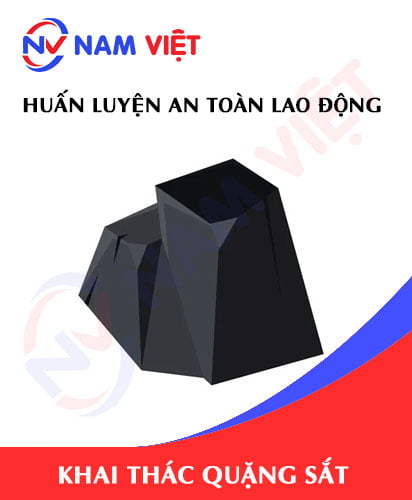
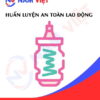
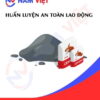





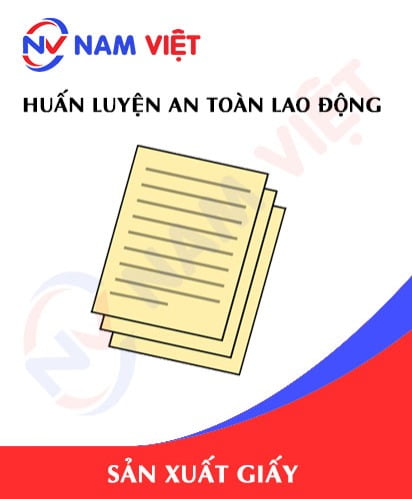



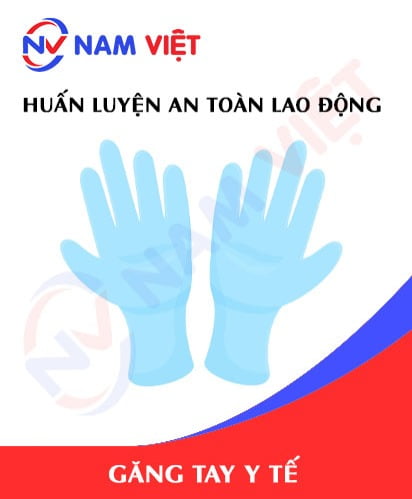

caotiensyhung.07081999
Dịch vụ huấn luyện an toàn lao động rất tốt nhé, giảng viên dạy rất sinh động dễ hiểu!